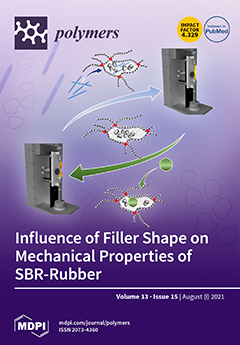As a promising organic semiconducting material, polymeric graphitic carbon nitride (g-C
3N
4) has attracted much attention due to its excellent optical and photoelectrochemical properties, thermal stability, chemical inertness, nontoxicity, abundance, and low cost. Its advantageous visible light-induced photocatalytic activity has
[...] Read more.
As a promising organic semiconducting material, polymeric graphitic carbon nitride (g-C
3N
4) has attracted much attention due to its excellent optical and photoelectrochemical properties, thermal stability, chemical inertness, nontoxicity, abundance, and low cost. Its advantageous visible light-induced photocatalytic activity has already been beneficially used in the fields of environmental remediation, biological applications, healthcare, energy conversion and storage, and fuel production. Despite the recognized potential of g-C
3N
4, there is still a knowledge gap in the application of g-C
3N
4 in the field of textiles, with no published reviews on the g-C
3N
4-functionalization of textile materials. Therefore, this review article aims to provide a critical overview of recent advances in the surface and bulk modification of textile fibres by g-C
3N
4 and its composites to tailor photocatalytic self-cleaning, antibacterial, and flame retardant properties as well as to create a textile catalytic platform for water disinfection, the removal of various organic pollutants from water, and selective organic transformations. This paper highlights the possibilities of producing g-C
3N
4-functionalized textile substrates and suggests some future prospects for this research area.
Full article






